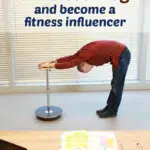Being a fitness blogger is fun but also a lot of hard work. But you can unlock the secrets to fitness blogging success by discovering the niche strategies, engagement tips, and monetization tactics that actually work. Here are the realistic steps you need to take to become an influencer and start your own thriving fitness blog – from someone who has done it and knows how the process goes.
What Is a Fitness Influencer?
A fitness influencer is an individual who influences the online fitness community through a large social media following. Other health enthusiasts usually highly regard an influencer’s opinions and tips.
An influencer uses their credibility to influence others and promote products and services for other brands in exchange for monetary compensation.
There are so many influencers on social media! But what does it take to become a profitable fitness influencer?
Whether you are just starting out or looking to take your influence to the next level, the following tips will prove helpful.
Comprehensive Guide to Becoming a Successful Health Influencer
If you’re passionate about fitness and love sharing your tips and workout routines with others, becoming a fitness influencer might be an appropriate career path for you. The first thing you’ll want to do is find a niche.
Choosing a Fitness Niche
As a fitness influencer, it’s essential to find your fitness niche.
For example, I specialize in helping people over the age of 50 who want not only to look better naked but also to extend the number of healthy years in their lifespan.
- Are you a personal trainer or fitness professional?
- Do you specialize in weight loss or bodybuilding?
- Once you’ve found your fitness niche, stick to it and be consistent with the content you produce.
Increasing your Social Media Presence
You can be a blogger. You can be an influencer. Or you can be both.
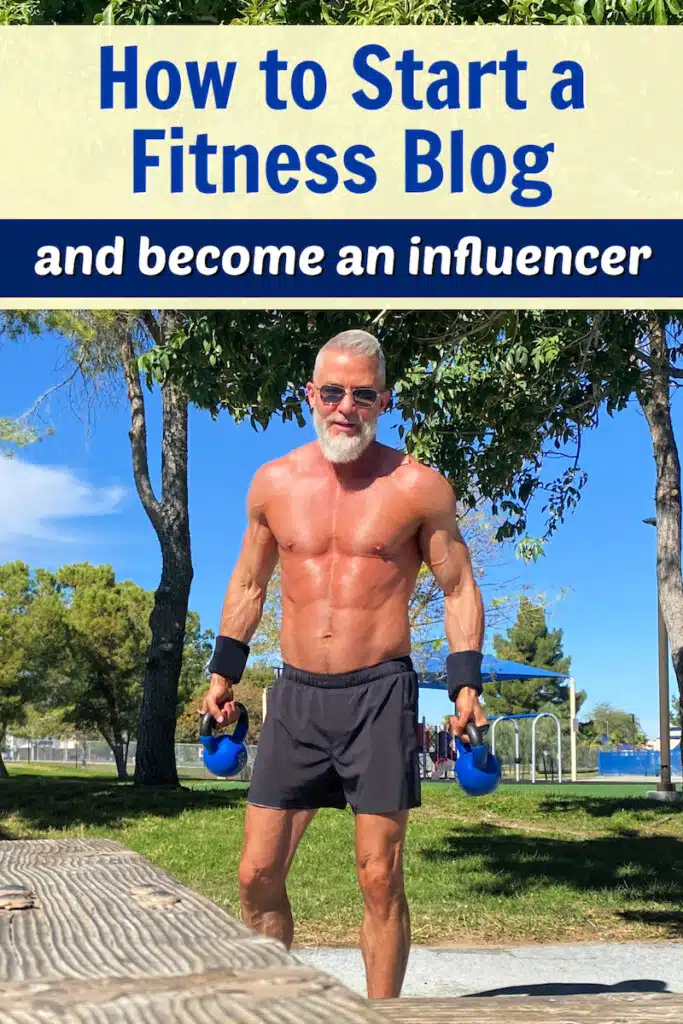
A blogger doesn’t require a robust social media presence as long as the blog is optimized for the Google search engine.
However, if you want to be an influencer, you must regularly post high-quality content on channels such as Tik Tok, Instagram, Pinterest, or YouTube.
The quality of images and videos online has gotten more sophisticated over the years, so if you want to participate in this competitive space, you’ll need to have images and videos that are at least above average in technical quality, artistic merit, and wit.
Be sure to use a good camera and editing software to make your content look professional.
It’s also beneficial to engage with your followers in two-way conversations. It should be part of your daily routine to spend time responding to audience questions positively.
It’s generally believed that the more engaged you are with your audience, the better your chances of becoming a top influencer in your niche.
Each social channel has a different algorithm that determines how many people see your posts, but it’s safe to say that – no matter what channel you’re on – you want to have followers who are regularly liking, commenting on, and sharing your posts.
The typical fitness influencer posts motivational excerpts from workouts and exercise ideas. Some go heavy on thirst traps (photos that show off their fit body and healthy lifestyle), while others share nutritional tips, recipes, or inspirational ideas.
What topics you post about will depend on the unique aspects of your creativity and what demographic you are serving.
What Is an Engagement Rate?
Your engagement rate is the percentage of people who see and interact with your content.
The higher your engagement rate, the more likely you are to be successful as a fitness influencer.
Working with Another Influencer
Collaborating with other influencers in your niche effectively grows your audience. You can do this by guest posting on each other’s blogs, appearing in each other’s YouTube videos, or even just sharing each other’s content on social media.
Creating an Influencer Media Kit
If you want to work with brands as a fitness influencer, you need to have a professional media kit. This should include statistics about your social media following, information about your blog or website traffic, and samples of your previous work. Creating a strong media kit will make it easier for you to pitch yourself to potential partners.
As an alternative to a standard media kit, you can create a specific page within your site to which you can direct brands after they inquire about a collaboration.
Being Authentic and Relatable in Your Content
The key to creating content that engages your followers is to be authentic and relatable. Share your tips and advice in a down-to-earth way and avoid coming across as too salesy or promotional.
Build credibility by being genuine, helpful, and personable; your audience will appreciate it. Soon, your followers will know your opinion carries value.
Engaging with Your Followers Regularly
Generally, you should aim to post on social media at least once a day.
It helps to create a posting schedule and checklist. This will help you stay in mind with your followers and ensure they see your content regularly.
Of course, quality is more important than quantity, so don’t sacrifice the quality of your content to post more often; otherwise, your target audience will soon lose interest.
Why Should You Become a Successful Fitness Influencer?
The answer as to why anyone would become a fitness influencer is simple. You should become a fitness influencer because you want to make a positive difference in the world.
Do you want to help people live healthier lifestyles and reach their fitness goals?
When you become an influencer, you have the ability to reach millions of people with your message.
You can inspire others to make positive changes in their lives, and that is an incredible feeling.
Additionally, being a fitness influencer can be lucrative. Brands will pay you to promote their products and services if you build a large enough following.
How to Monetize Your Influence
There are a few different ways you can monetize your influence like other successful fitness influencers:
- Promoting products or services that you believe in.
- Collaborating with leading brands on a sponsored post or product reviews.
- Giving talks or workshops on fitness and health.
- Selling your own products, courses, services, or training programs.
- Have an accompanying blog that produces ad revenue (more on this below).
Remember that being an influencer is all about helping others regardless of your route. If you can do that, you’ll be successful.
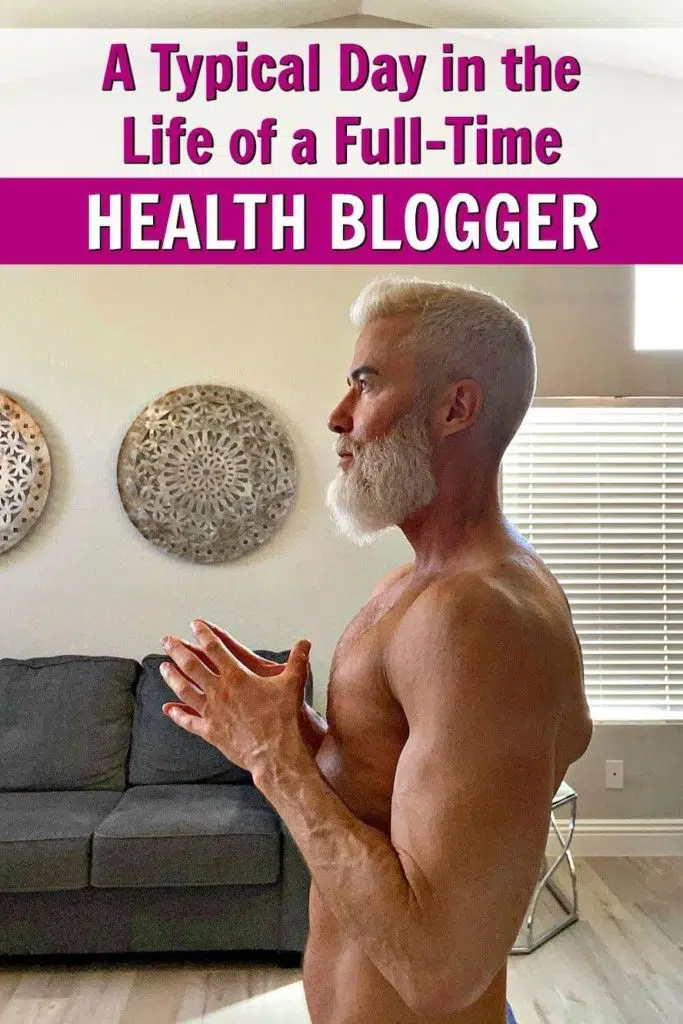
Becoming a successful fitness influencer takes time, effort, and dedication. It requires you to find your niche, produce great content, engage with your followers, and maintain an enthusiastic and disciplined attitude.
Is Being a Blogger Among the Best Health and Wellness Business Ideas?
A fitness blogger doesn’t have to be on social channels or be an influencer. An influencer doesn’t have to have a separate website or be a blogger. But some professionals do both.
Do you wonder what it’s like to run a fitness blog and what a fitness blogger does daily?
There are many career opportunities available within the wellness industry.
Depending on your personality and work style, you might find blogging among the most enjoyable health and wellness business ideas. And the best part is that the ad revenue creates a passive income to earn money while you sleep.
Why There is Demand for Health and Wellness Professionals
There is an increasing demand for health and wellness professionals. People tend to take their health more seriously as they age, and that means they’re willing to spend money on self-care:
- By the year 2050, 1.5 billion people will be age 65 or older. Not all of these people will have the financial resources to spend money on health and wellness professionals. However, even if only 1% had more than ample resources, that would still be a minimum of 15 million seniors looking to spend money on a wellness or fitness pro – either in person or online.
- Currently, there are approximately 2 billion people over the age of 40, which means there are 20 million people who could easily afford your health, wellness, or fitness services – and these are conservative estimates.
For Fun and Profit: Best Jobs in Health and Wellness
Some of the more satisfying jobs in the well-being sector that also have higher earning potential are:
- personal trainer
- personal chef
- massage therapist
Of these positions, the massage therapist would perhaps be the most challenging position because it can only be done in person, is physically taxing, and there is a definite limit to the number of clients you could see within a week and still be effective. Though the work is emotionally rewarding because you are helping people, it can also be difficult.
However, the other two careers – trainer and chef – can be done both in-person and online. In fact, as a fitness blogger, you can combine both roles and create creative content – workout routines and healthy recipes – that earn you passive income.
The type of content you create can be based on your inherent talents and interests – be it visual media, audio media, or the written word.
Some bloggers enjoy creating videos, others prefer podcasting, and some enjoy writing detailed health articles. Many fitness bloggers do all three.
What Is Passive Income?
Passive income is an expression that refers to any earning activity that doesn’t directly require in-person interaction with a contractor, employer, or customer.
For example, as a massage therapist, if you’re not giving a client a massage in that moment, then you are not earning money.
But as a wellness pro with a passive income stream, you would earn money even when you are not at work.
Yes, you can earn passive income from blogging – though I don’t like the term “passive income.”
Blogging is not passive.
I prefer the term “leveraged income,” which means you work when you want to.
But whether you work on a particular day or not, you still wake up in the morning and check your email inbox to discover that – while you were sleeping peacefully in the night – you sold several coursebooks, Mediavine has deposited ad revenue into your checking account, and a company has contacted you to see if you will collaborate with them on their new product as an influencer for a showcase on Pinterest.
Passive Income Streams
As mentioned above, here are typical examples of passive income streams for health, wellness, and fitness bloggers:
- ad revenue
- course or product sales
- influencer contracts
Additionally, many bloggers have an income stream from consulting.
In other words, their blogs generate new coaching clients they serve by phone or video call appointments.
Some fitness bloggers even do their consulting via email appointments. For example;
- Every Friday, a client will post – usually to a private portal – the workouts and challenges they experienced during that week, including video snippets of new exercises they tried.
- Then, each Monday, the coach responds on the portal with positive and negative feedback, including notes on improving exercise form and new exercises or recipes to try the following week.
Coaching is not passive income, but it can be an additional revenue vertical to add to your passive income streams.
Similarly, personal chefs can become recipe bloggers while generating online clients for their healthy meal-prep delivery service.
Why Start a Fitness Blog
If you want to be a health and wellness influencer or a personal trainer, you likely don’t need a fitness blog.
Instead, you can use YouTube, TikTok, Pinterest, or Instagram to establish your brand. In fact, successful YouTubers make their money not by driving traffic to their website from YouTube but rather by keeping viewers on the YouTube platform and earning dollars from YouTube ad revenue via their creator program.
But if you also want to sell products, online services, and digital ads, then you’ll at least need a basic website.
However, just because you have a website doesn’t necessarily mean you need a “blog.”
A blog is a section of a website that has articles. But if you hate to write, you might be able to get by creating only long-form videos on YouTube, short-form videos on Instagram or TikTok, or audio podcasts on iTunes.
If you’re not going to write health articles, your website wouldn’t need a blog section. Instead, your site would be a calling card that showcases you and your services with information on contacting you (and maybe a link to your private portal for coaching clients).
Strictly speaking, blogging is for writers and is not a clock-in, clock-out job. It’s all-consuming.
I think about my business practically all day, seven days a week. My mind is always percolating.
However, blogging can also be deeply rewarding.
Turning Your Healthy Hobby into a Side Hustle
Many people who became successful fitness bloggers started out by keeping their existing day jobs while beginning to blog as a side hustle.
This can be a wise move because you will still have income while also having the luxury of gradually learning the craft of blogging.
By blogging as a side hustle, you can afford to make mistakes without risking your livelihood.
As you succeed over time, you may then one day have enough dependable income coming to you from your blogging efforts to (finally) consider surrendering your day job – so you can become a full-time blogger instead.
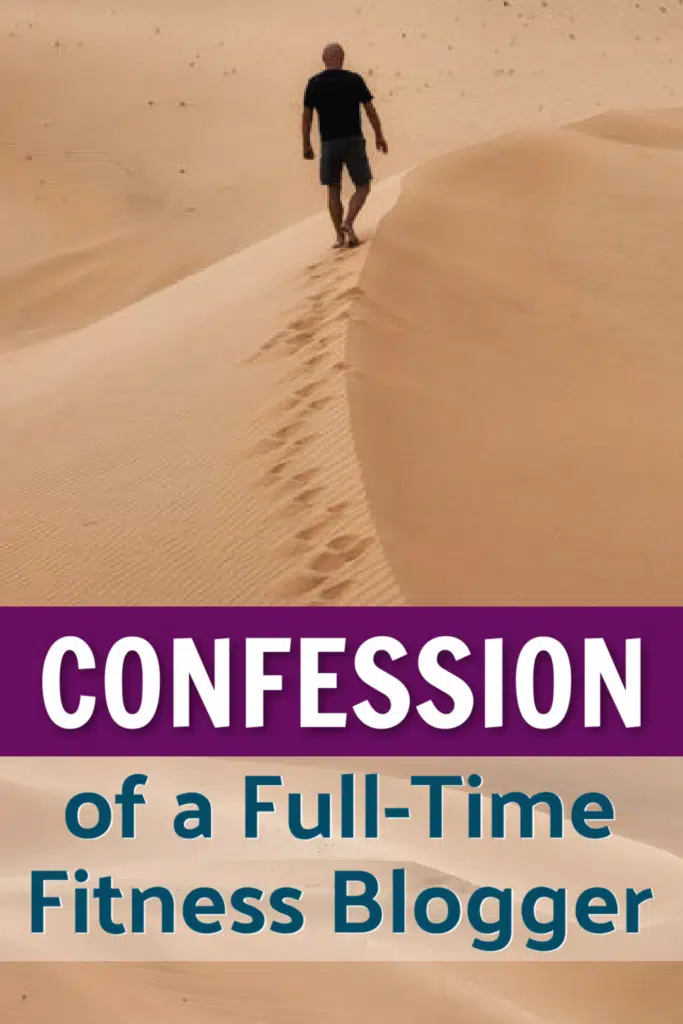
Below, I share the pros and cons of how to start a fitness blog. I begin with a brutally honest description of the challenges many of today’s health and wellness bloggers face.
I conclude with a list of how you can start a fitness blog.
Sweat, Hustle, Thrive: The Real Story of a Fitness Blogger’s Life
Living a fitness lifestyle isn’t always as easy as it might appear.
Here is my full confession – a typical day from my life as a full-time health blogger.
I’ve been blogging for over 14 years. It’s how I earn my living. The good news is that I enjoy it deeply.
However, it’s not all rainbows and unicorns.
It can be arduous work. Here’s the unvarnished truth.
Confession 1 on How to Start a Fitness Blog: Goodbye Hobby, Hello Job
I have a peculiar career within the fitness industry.
I write articles, film videos, and record podcasts about how to get healthier.
The good thing about this job is that it forces me to stay in good condition since I need to practice the fitness lifestyle I promote on my blog.
However, this also means that what was once a fun hobby – my workouts – is now an integral part of my job.
I still enjoy my fitness lifestyle, but I caution you to be careful about turning your hobby into your career. Sometimes, it’s more joyful to simply keep your hobby a hobby.
Confession 2: The Pressure to Sleep
As I mentioned above, if you’re going to start a fitness blog, you need to be in shape. That means hard workouts. And hard workouts require deep sleep to recover.
If you do a light workout three times a week, your sleep habits probably don’t have to change much.
But if you train like an athlete, ample sleep is no longer optional – it’s mandatory.
I’m a light sleeper. (It takes me 15 to 20 minutes to fall asleep each night; plus, there are brief periods in the middle of the night in which I am awake – about 30 to 60 minutes in total. My body requires at least 8.5 to 9 hours of sleep each night to recover from strenuous workouts. This means I have to be in bed 10 hours each night to get 9 hours of sleep.)
10 hours in bed sounds luxurious, right?
Well, it is luxurious. But it can also be a drag. I’d sometimes rather have a longer awake time to get more done – or to visit with friends, watch comedy, or read novels.
Confession 3: This Influencer Has Vegetables for Breakfast
If you’re going to start a fitness blog, you’re going to have to be trim. And that means eating a healthy diet.
I enjoy having a green smoothie in the morning.
As part of my fitness lifestyle, I eat an anti-inflammatory diet that includes up to 9 loose cups of vegetables daily (3 cups of dark leafy greens, 3 cups of cruciferous, and 3 cups of rainbow colors) for their phytonutrients and cofactors.
Green smoothies make it much easier to hit that 9-cup target.
Plus, vegetables in the morning are alkalinizing. You feel like a nutritional winner when you’ve had vegetables before 10 am.
But the challenging part of green smoothies isn’t drinking them. It’s making them.
I meal-prep my smoothies twice a week – making a huge batch and storing them in covered glasses in the refrigerator.
I clean all the vegetables carefully before they go into the blender.
It takes a while.
(Fortunately, I’ve figured out that if I save up my favorite podcast episodes for meal-prep day, it makes this chore more enjoyable.)
Confession 4 on How to Start a Fitness Blog: Swimming Upstream
I was a fitness trainer back before fitness was mainstream.
There were relatively few gyms back then – just a dusty weight room at your neighborhood YMCA or, if you were fancy, the country club with its golf and tennis.
Training clients was a dream back then because civilians didn’t know about weight training. They didn’t even know what “sets” or “reps” were.
This was a good thing because it meant that clients showed up for sessions with an open attitude, a sense of wonder, and an eagerness to learn.
Jump forward to today, when civilians are much more knowledgeable about fitness (indeed, many people consider themselves experts in the topic), and yet, paradoxically, the general population has never been more unfit:
- 81 million people in the US aged six and older are physically inactive.
- Children now spend more than seven and a half hours a day in front of a screen.
- Less than 5% of adults participate in 30 minutes of physical activity daily.
- More than 80% of adults do not meet the guidelines for both aerobic and muscle-strengthening activities (and those guidelines are minimal).
- The average US diet exceeds the recommended intake levels of added sugars and refined grains – while simultaneously under-consuming the recommended amount of vegetables.
- Over 80 million U.S. adults are obese, and it’s predicted that half of all adults (115 million) will be obese in ten years.
Today, most people think of themselves as healthier than average – even though they’re more sedentary than they realize and their diet is less nutritious than they believe it is.
That’s because our brains are soaking up information faster than we can act upon it.
It’s not what you know that makes the difference; it’s what you do habitually.
Your habits are your life.
Consequently, my job has changed over the years.
When I write an article, my primary intention is no longer to educate (though that is my secondary intention). My chief aim is to inspire.
Inspiration is the missing ingredient in most people’s days.
Each morning, when I arrive at my standing desk, I ask myself, “How can I get their attention and help motivate them?”
Confession 5: Reaching a Post-Epiphany Audience
I’m 58, and I first got the idea to launch this website when I was 39.
I had started experiencing symptoms associated with accelerated aging, so I went online to find motivating resources to help me make the second half of my lifespan even healthier than the first half.
Know what I found?
Nothing.
That’s right; nothing was available (just muscle magazines with cover models in their 20s).
Today, thankfully, there are many resources available online.
But I seek to serve a specific segment of the population.
The people I can most help are those who are just beginning to realize that health matters most.
Excellent health is the foundation upon which a purposeful and fulfilling life is built:
- Want to make a positive difference in the lives of your loved ones?
- Want to make your mark on the world?
- Want a thriving relationship with your grandchildren?
No matter what positive thing you want to achieve or experience, vibrant physical health and energy will augment it.
No matter what I’m doing at my desk – editing photos, writing a new article, or posting an exercise-for-the-day on social media, I visualize my message reaching someone over the age of 50 who is beginning to understand – on a whole new level – that improving their own health is their biggest current priority.
Confession 6: An Influencer Has to Level Up the Grooming Regimen
Many of us prefer to appear fresh, eager and energized, so we groom.
But when you’re being photographed almost every day for work, it’s a whole other level of grooming. Everything has to be scrubbed, moisturized, and trimmed.
If having to appear camera-ready every day sounds glamorous to you, become a health blogger. I must caution you that it requires more time and energy than standard grooming, probably more than you would expect.

Confession 7 on How to Start a Fitness Blog: Lunch-Hour Workouts
A lot of writers do their best work in the early morning.
It’s the same for me.
This means that I save my workouts for my lunch hour.
I usually work seven days a week, about 6 to 7 hours each day, to achieve this.
I wake up early, get to my desk to begin work, and after about four hours, I stop, put on sunscreen, and take a 2.5-hour break to workout.
Because I’ve been indoors at my desk all morning, I try to do my workouts outdoors whenever possible.
The fresh air and sunlight revive me and help me feel like I’m winning the day.
Furthermore, my lunch hour is my only chance to spend time with humans other than my spouse. So if a friend wants to meet up over coffee, I suggest instead that they join me on one of my lunch-hour workouts.
3 or 4 days a week, my workouts are heavy – running, sprinting, or weight training.
The remaining days are light days and are allocated for workouts that facilitate recovery – such as hiking, pilates, swimming, yoga, or simply a long walk.
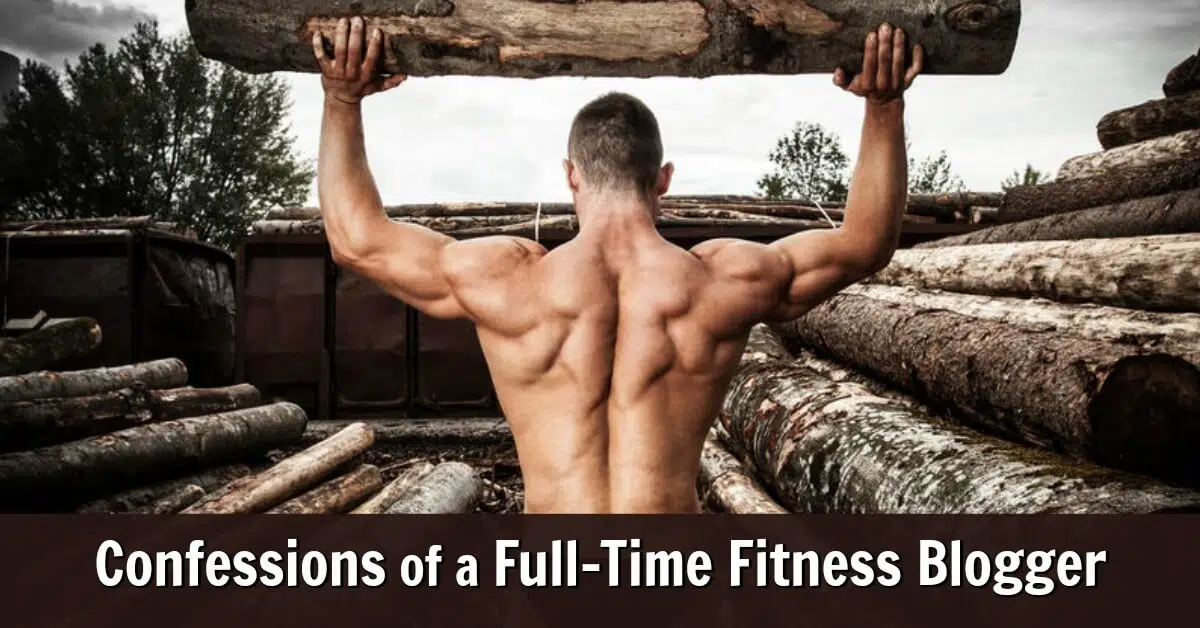
When my body reaches a certain level of muscular soreness, then that’s when I take a Rest Day (no exercise whatsoever), usually one day (sometimes two) each week. It’s a good time for me to prepare my meals and smoothies and store them in the refrigerator for the days ahead.
Confession 8: Nothing Left in the Tank
I’m a morning person, and, like most morning people, my energy level drops significantly in the evening.
Because I don’t use caffeine or sugar to create extra “artificial” energy, I have to be even more strategic with how I use my time after 1:30 pm because there isn’t any extra to waste.
After my “lunch-hour” workout, I’m back to my standing desk to work more on the website. And then, I move from the home office into my kitchen:
- I begin preparing dinner for myself and the spouse around 4:30 pm.
- Around 5:00, we eat dinner while we watch a 20-minute streaming comedy on tv.
- Then, I work for another 30 minutes.
- Around 6:00, we have a “fitness dessert” and watch another 20 minutes of comedy.
- Then, I work for another 30 minutes.
- I finish each day with a Spanish lesson on Duolingo or Rosetta Stone. No matter how tired I am, I try to finish the day with a Spanish lesson.
- Sometime after 7:00 p.m., I become too tired even to speak – my spouse understands this about me, for which I am grateful – so I retire to bed with a book and begin reading until I fall asleep.
Confession 9: Unexpected Frustrations
Though I left out a lot of minutiae (yes, I floss twice each day), I’ve just shared with you a typical day in the life of a full-time health blogger.
But no confession would be complete without revealing some of the more unexpected frustrations faced by bloggers lately:
Gender Rigidity
The workouts and diet plans outlined on this website are meant to be modified to accommodate each person’s unique circumstances and fitness level so they are appropriate for both men and women.
However, many mature women want the fitness photos and videos on my site to depict mature women, and all the fellas want photos of mature men.
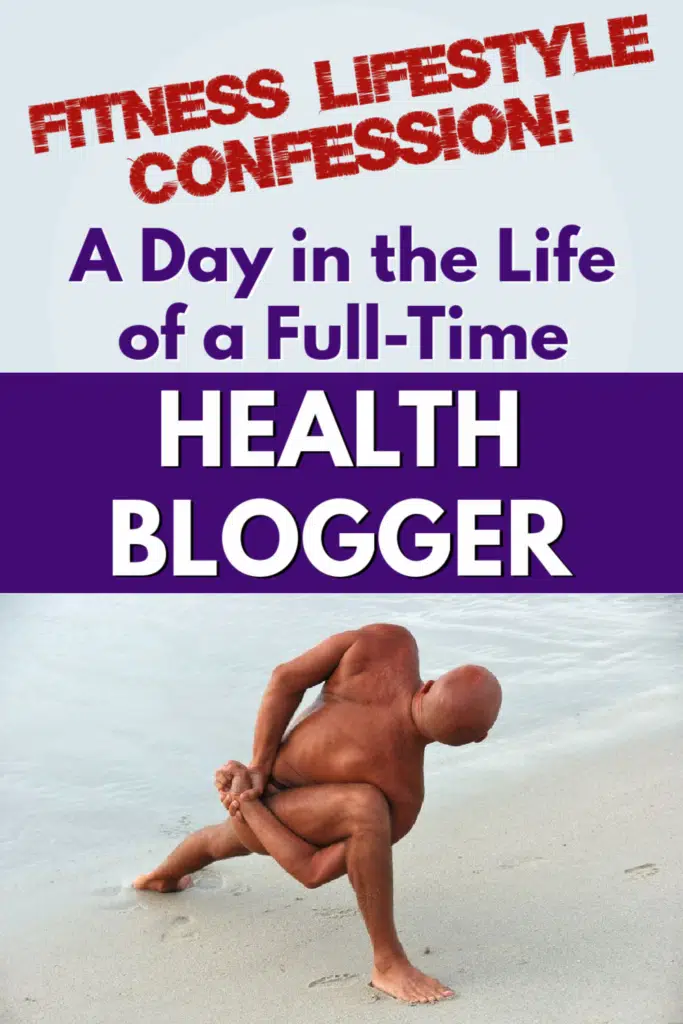
That’s just not possible.
First of all, it’s challenging to find good stock photography of fit men and women over the age of 50.
Secondly, stock photography is expensive, so I mostly use photos of myself in articles.
This is not the 1920s, and I need to be able to depend on viewers to be evolved enough to see that an article is relevant to them, even if it doesn’t include a picture of a person who looks similar to them.
Social is Pay-to-Play
In the early days of social media, traffic was free. Facebook would send you viewers as long as your content was good.
Those days are, sadly, over.
Now, if you want potential new viewers to know that you exist, you mostly have to pay for digital ads.
Large, publicly traded corporations can easily fit these advertising costs within their quarterly marketing budgets. But for solopreneurs and bloggers, it usually isn’t feasible.
That means a blog’s ability to thrive depends almost entirely on the viewers’ willingness to tell their friends about it or forward them a copy of the blog’s weekly email update.
Step-by-Step Guide on How to Start a Fitness Blog
Now that I’ve told you the challenges you’ll likely face when you start a fitness blog, do you still want to start one? If so, I encourage you to follow these simple steps toward developing a successful fitness blog:
- First step: decide on revenue verticals. How will your blog earn money? Will you help clients achieve fitness goals as a personal trainer? Will you place ads on your blog posts? Will you teach online courses? Will you be a fitness expert and influencer on social media platforms? Will you place affiliate links within your articles?
- Next step: decide on your target audience. The best fitness bloggers serve a specific fitness niche.
- It’s a good idea to build your blog on WordPress.
- Choose a hosting provider for your new site.
- Choose a provider for your email marketing.
- It’s time to start creating quality content. You choose a particular topic for each article by doing keyword research.
Using My Own Fitness Blog As an Influencer Example
In my case, I receive most traffic to my fitness blog from two search engines – Pinterest and Google.
For Google, I do keyword research before I write new content.
I assign each article a primary keyword (or keyword phrase).
I keep track of all the keywords I’ve used on Google Sheets.
I try to choose a keyword with a higher volume of searches but lower competition.
For Pinterest, I have branded myself as a fitness enthusiast by posting new visual content (called Pins) containing helpful ideas about weight loss and exercise. I follow Pinterest’s best practices.
I earn revenue by having Mediavine place ads on my site (that’s why you want to use the Trellis WordPress theme so that one day, when your fitness website has enough traffic, you can easily synch with Mediavine).
I also earn revenue by selling my coursebook.
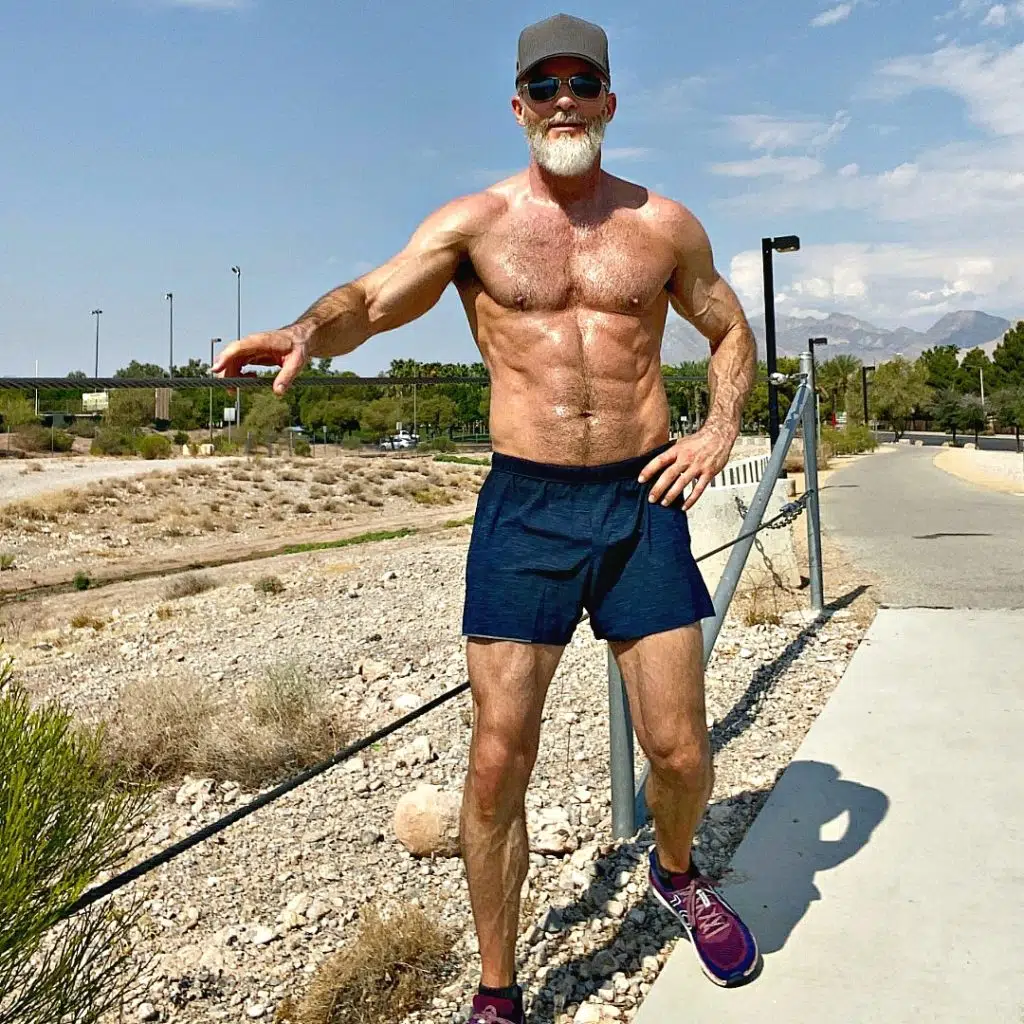
Finally, companies pay me to promote their products and services on social channels as an influencer.
Your email list is a good way to grow your own fitness business. Take your email list seriously. Provide value and entertainment to your subscribers.
Be careful of social media. It might get you influencer contracts with brands, but it doesn’t drive much traffic to your site. Remember to spend time and energy making search engines happy by creating a successful blog that solves people’s problems.
The main difference between being only an influencer and only a blogger is that, as a blogger, 80% of your time should be spent writing new, helpful articles.
Additional Sources to Help You Master Fitness Blogging and Become a Thriving Health & Wellness Influencer:
Confession from the Culture: Statistics from the President’s Council on Nutrition – https://www.hhs.gov/fitness/resource-center/facts-and-statistics/index.html
Facts about Blogging and Bloggers – https://optinmonster.com/blogging-statistics/
The Cons of Turning Your Passion into a Career – https://yourstory.com/2016/08/turning-passion-into-career
9 Cups of Vegetables a Day – https://www.younghealthandfitness.com/nine-cups-vegetables/
Reducing Inflammation Is Key to Longevity – https://medicalxpress.com/news/2015-08-inflammation-telomere-length-healthy-longevity.html
Grow Dendrites: Learning a New Language is Good for Brain Health – https://unbabel.com/blog/brain-language-learning/
World Population of Seniors – https://www.un.org/development/desa/en/news/population/our-world-is-growing-older.html
Percentage of People in Midlife – https://www.visualcapitalist.com/the-worlds-population-2020-by-age/
